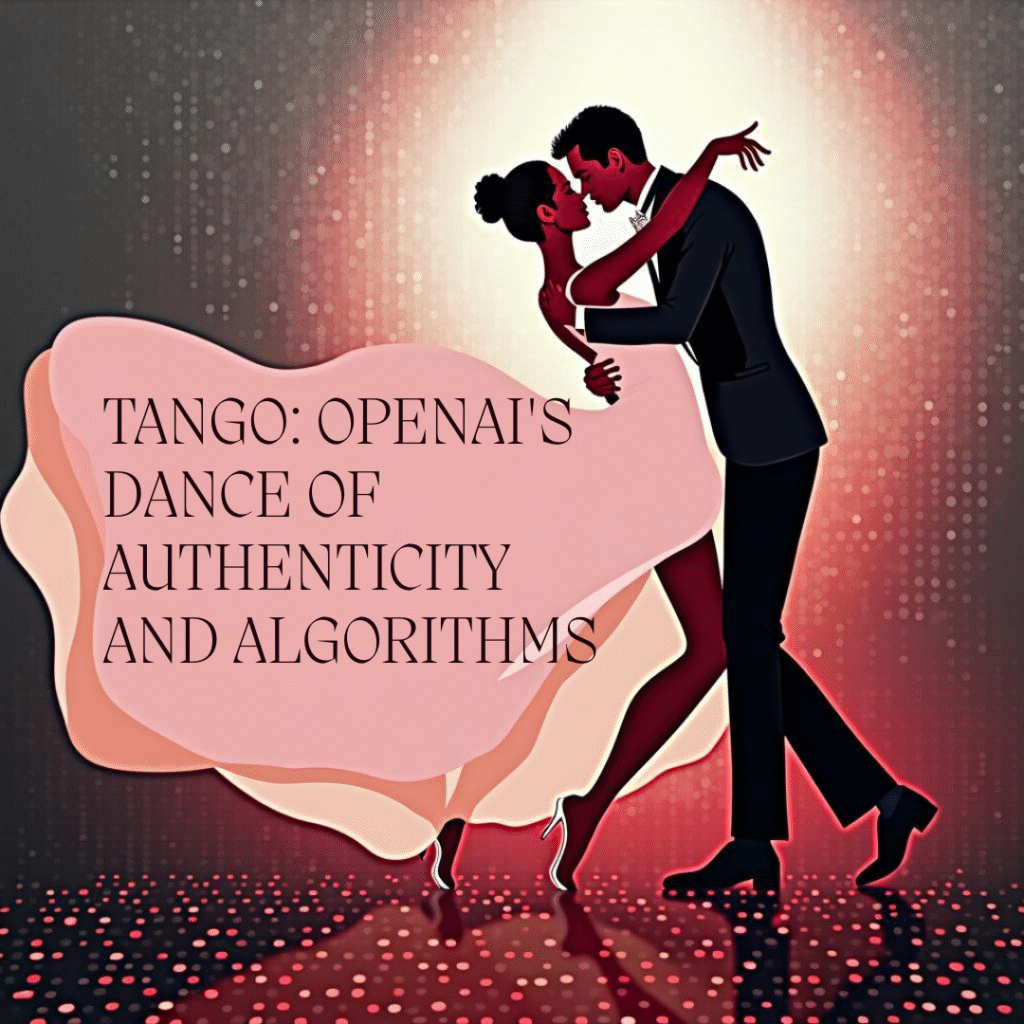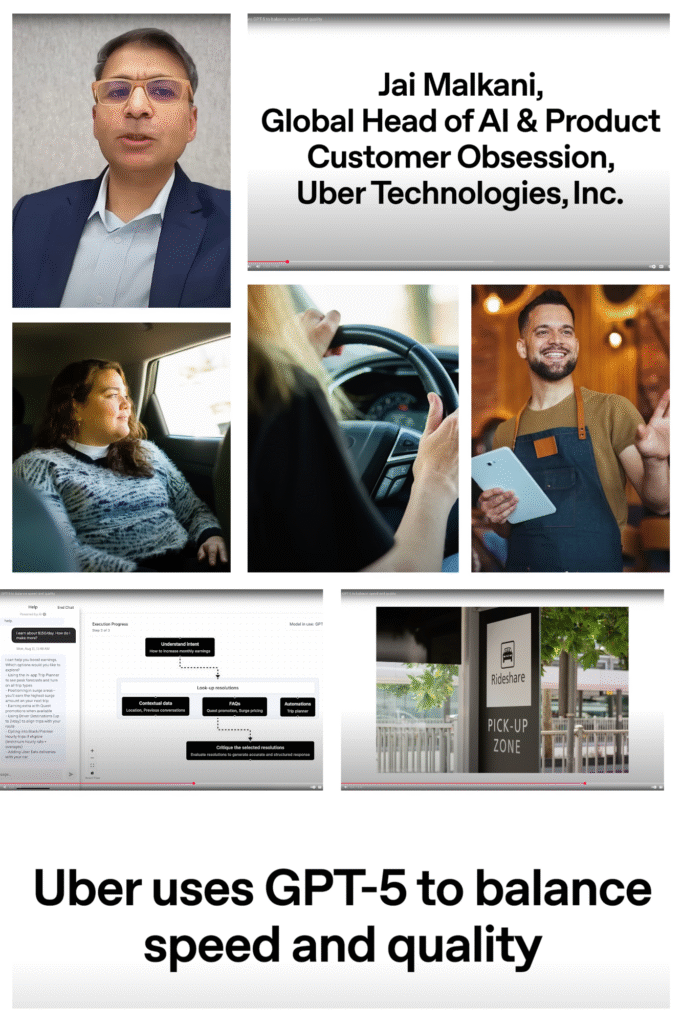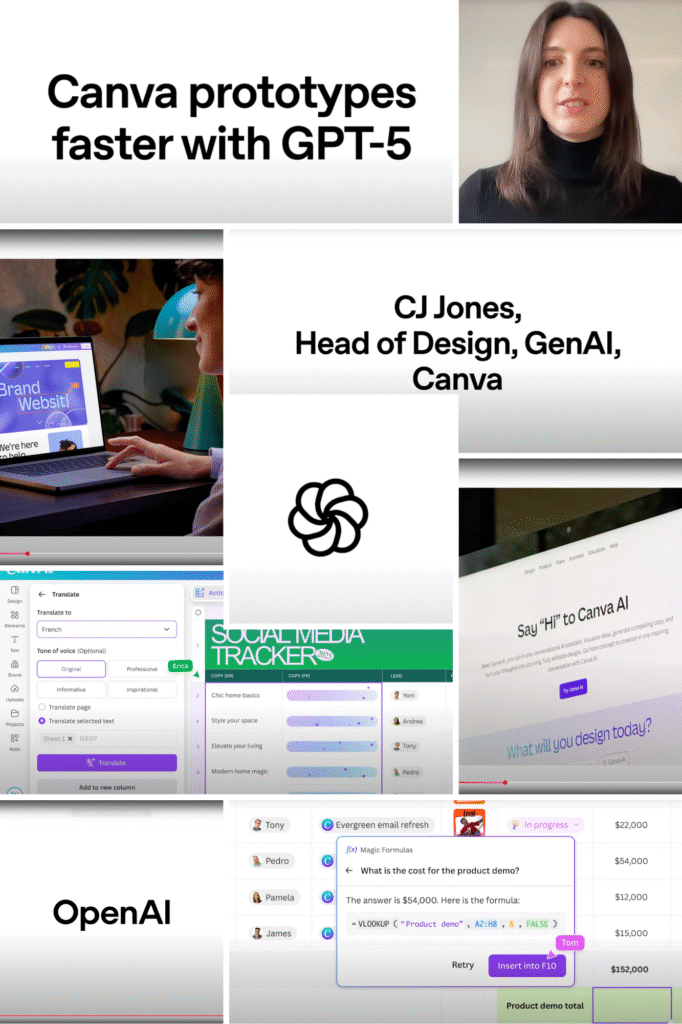How two brief corporate videos reveal the peculiar art of selling trust in the age of artificial intelligence

- The Setup: When Less Becomes More (Or Does It?)
- The Authenticity Algorithm: Calculating Genuine Feeling
- Customer Advocacy: The Performance of Professional Enthusiasm
- The Narrative Economy: Storytelling in the Age of Microseconds
- Digital Marketing's Efficiency Trap: When Less Is Just Less
- Technical Craft: The Art of Invisible Excellence
- Context and Credibility: The Distribution Dilemma
- The Global Context: Scaling Testimonials Across Cultures
- Customer Advocacy in the Spotlight: When Executives Become Brand Ambassadors
- The Measurement Question: How Does One Quantify Trust?
- Looking Forward: The Evolution of Corporate Authenticity
- Final Thoughts: Competent Theatre in Search of Its Audience
The Setup: When Less Becomes More (Or Does It?)
In the grand theatre of corporate marketing, few performances are as delicately choreographed as the customer testimonial. OpenAI’s recent GPT-5 campaign offers us two exquisite specimens: CJ Jones from Canva and Jai Malkani from Uber, each delivering precisely calibrated endorsements in videos shorter than a decent cup of tea takes to brew. At 53 and 42 seconds respectively, these testimonials represent either the climax of attention-economy efficiency or its tragic reduction—possibly both.
The curious thing about brevity in marketing is how it forces every word to earn its keep. Strip away the usual corporate padding, and what remains must justify its existence. In Jones’s case, we get something rather remarkable: actual numbers. Her claim of a “44% improvement in successful completions of complex and multi-step tasks” lands with the satisfying thud of genuine specificity. In an industry awash with vague promises of “transformation,” concrete metrics feel almost revolutionary.
Yet this precision cuts both ways. The very specificity that lends credibility also raises questions that the format cannot accommodate. What constituted successful completion previously? How was this measured? Over what timeframe? The testimonial’s strength—its decisive clarity—becomes its limitation. As we explore in Customer Advocacy in Digital Marketing, this tension between authenticity and corporate messaging is particularly acute in today’s digital landscape.
The Authenticity Algorithm: Calculating Genuine Feeling
The central paradox of modern testimonial videos lies in their pursuit of authenticity through increasingly artificial means. Both OpenAI offerings display production values that would make a Hollywood publicist weep with pride: flawless lighting, pristine audio, and editing so seamless it disappears entirely. The technical execution is beyond reproach, which is precisely the problem.vocalvideo+1
Research consistently shows that testimonial effectiveness hinges on perceived authenticity.
When viewers detect artificial manipulation—and contemporary audiences are remarkably sensitive to authenticity—credibility evaporates faster than confidence in a cryptocurrency crash. The challenge becomes acute when every element of production screams professional intervention. motioncue+1
Consider Malkani’s assertion that GPT-5 makes conversations feel “more human and on brand”. The phrase itself embodies the testimonial’s essential tension: discussing humanity through the lens of brand compliance. It’s rather like describing spontaneity according to a script, or explaining jazz through a metronome. This mirrors insights from Brand Anthem in the Age of Algorithms, where authentic voices face similar challenges in corporate contexts.youtube
Yet dismissing these videos as purely manufactured misses their genuine achievements.
The brief format demands economy of expression that, at its best, achieves a kind of crystalline clarity.
When Jones mentions serving users in “over 100 languages,” the scale implications hit immediately. There’s no fat in the messaging, no wandering tangents—just direct communication of substantial scope.90seconds
Customer Advocacy: The Performance of Professional Enthusiasm
The evolution of customer testimonials presents marketing departments with an intriguing challenge: how does one systematically orchestrate the appearance of honest endorsement? Both speakers navigate this terrain with varying degrees of success, each embodying different approaches to executive advocacy.
Jones opts for technical credibility over emotional connection.
Her discussion of “magic formulas” transforming natural language into complex calculations provides viewers with a concrete use case they can visualise. The approach acknowledges that B2B audiences often prefer substance over sentiment—a refreshing departure from the usual testimonial emphasis on feelings and transformation.
Malkani, meanwhile, attempts the more treacherous path of scale-based storytelling.
His reference to “hundreds of millions of riders” aims to overwhelm through sheer magnitude. The strategy works insofar as it communicates operational significance, yet it risks reducing individual user experience to statistical abstraction.
What both approaches share is a curious self-consciousness about their own performance.
Modern customer advocates seem acutely aware that they’re performing endorsement rather than simply endorsing.
This meta-awareness creates its own form of authenticity—the authentic performance of performing authentically. As discussed in our analysis of Employee Branding in Digital Marketing, this evolution reflects broader changes in corporate communications.leadsatscale+1
The result is neither entirely artificial nor completely genuine, but something altogether more interesting: a new category of corporate communication that acknowledges its own constructed nature whilst still attempting to persuade. It’s corporate theatre that winks at its own theatricality.
The Narrative Economy: Storytelling in the Age of Microseconds

Traditional testimonials follow a narrative arc: problem, struggle, intervention, resolution, transformation.
These compressed formats demand something closer to haiku—distilled meaning that implies rather than explicates the broader story. The question becomes whether such compression improves or lessens narrative impact. contentbeta+1
In Jones’s testimonial, the narrative exists largely in negative space. We learn that complex formulas “wouldn’t have been accessible before”, but the pain of that inaccessibility remains abstract. The transformation is stated rather than demonstrated, leaving viewers to construct the emotional journey from sparse materials.
This approach has its merits.
B2B audiences, particularly technical ones, often prefer implication to exposition. They can fill in the narrative gaps themselves, potentially creating stronger emotional investment than more explicit storytelling might achieve. The testimonial becomes collaborative—a conversation between speaker and viewer rather than passive consumption.
Yet the abbreviated format also eliminates space for the kinds of specific details that build credibility through accumulated evidence.
There’s no room for implementation challenges, learning curves, or comparative analysis.
Instead, we get conclusions without the working-out, results without the process. This reflects patterns explored in my piece on AI’s Impact on Digital Marketing Strategy, where brevity often conflicts with depth.testimonialhero+1
The Uber testimonial suffers more acutely from this compression. Malkani’s discussion of “thorough and structured critiques” suggests some sort of quality control mechanism, but viewers never understand what went wrong previously or why consistency matters at Uber’s scale. The solution feels detached from any discernible problem.
Digital Marketing’s Efficiency Trap: When Less Is Just Less

The videos’ brevity reflects digital marketing’s obsession with attention economy metrics.
Average video engagement drops significantly after 15 seconds, creating pressure for increasingly condensed messaging.
Yet this statistical reality may conflict with testimonials’ fundamental purpose: building trust through demonstrated understanding.influencermarketinghub+1
Trust typically requires time to develop—time for speakers to establish credibility, for viewers to assess authenticity, for stories to unfold with sufficient detail to feel believable.
Compressed formats risk reducing testimonials to advertising in disguise, trading long-term trust-building for short-term attention capture.shapo+1
The OpenAI testimonials navigate this challenge with mixed success.
Their brevity ensures completion rates that longer formats might not achieve, yet the compressed messaging feels more like product announcements than customer advocacy.
The efficiency comes at the cost of emotional resonance.contentbeta
However, there’s something to be said for marketing that respects viewers’ time constraints. In an information-saturated environment, testimonials that make their points quickly and clearly perform a genuine service.
The challenge lies in distinguishing efficient communication from shallow messaging.
This balance is crucial for brands navigating Digital Marketing Strategies in the AI Era.
Technical Craft: The Art of Invisible Excellence
From a production standpoint, both videos demonstrate what might be called competent invisibility—technical execution so smooth it doesn’t call attention to itself.
Audio quality is pristine, framing is professional, and editing serves the content without overwhelming it.
This restraint deserves recognition in an era of over-produced corporate content.thriveagency+1
Yet the videos also illustrate the limitations of purely technical excellence.
Research suggests that testimonial videos work best when they combine interview footage with product demonstrations and supporting visuals.
These testimonials rely almost entirely on talking heads, missing opportunities to show GPT-5 in action or visualise the improvements being described. wisernotify+1
The missed opportunities feel particularly acute given the subject matter. GPT-5’s capabilities could be demonstrated rather than merely described, potentially creating more engaging and credible testimonials. When Jones mentions “rapid prototyping” of new features like polls and quizzes, viewers are left to imagine what this might look like rather than seeing it demonstrated.
The production choices reflect a conservative approach that prioritises polish over innovation.
There’s nothing wrong with this strategy, but it does raise questions about whether such careful testimonials can compete effectively with more dynamic alternatives in an increasingly crowded content landscape. filmdistrictindia
Context and Credibility: The Distribution Dilemma
Both testimonials exist within OpenAI’s official marketing ecosystem, appearing on company channels as part of a coordinated launch campaign.
This context shapes viewer interpretation regardless of content quality—when testimonials appear alongside promotional materials, they inevitably become promotional materials themselves.wikipedia+1
More sophisticated distribution strategies might involve encouraging customers to publish testimonials independently, lending greater authenticity to the endorsements.
Yet this approach sacrifices control for credibility—a trade-off many marketing departments find uncomfortable.cnbc
The timing also matters. These testimonials appeared within days of GPT-5’s official announcement, suggesting coordinated planning rather than organic customer response.
There’s nothing inherently problematic about coordination, but the artifice becomes apparent when messaging feels too aligned with vendor positioning.
This dynamic is explored further in our analysis of Consumer Psychology in Digital Campaigns.wired+1
The challenge for corporate communications lies in balancing authenticity with strategic objectives.
These testimonials succeed admirably at advancing OpenAI’s marketing goals whilst maintaining professional credibility. Whether they succeed at building genuine customer trust remains an open question. shapo
The Global Context: Scaling Testimonials Across Cultures
Jones’s mention of building “for over 100 languages” touches on an underexplored aspect of testimonial marketing: cultural scalability.
What constitutes persuasive customer advocacy varies significantly across different markets and communication styles. linkedin
These testimonials feel distinctly Western in their approach—emphasising individual authority, technical specificity, and corporate achievement.
Whether such messaging resonates equally across Canva and Uber’s global user bases remains unclear. The challenge becomes particularly acute when testimonials must work across radically different business cultures and communication norms.
The brief format potentially helps with cultural translation—shorter messages face fewer opportunities for cultural miscommunication.
Yet they also eliminate space for the kinds of contextual details that help testimonials feel relevant to diverse audiences. This global perspective is essential for brands operating in diverse markets, as highlighted in our coverage of Digital Marketing in India.
Customer Advocacy in the Spotlight: When Executives Become Brand Ambassadors
Both speakers embody fascinating approaches to executive thought leadership whilst serving as customer advocates for a third-party vendor.
Jones positions herself as a technical innovator sharing genuine insights about practical AI applications.
Her credibility derives from demonstrated understanding of GPT-5’s integration at scale rather than corporate marketing authority.
Malkani takes a different approach, emphasising operational mastery and strategic oversight.
His authority comes from managing complexity across Uber’s global platform rather than technical AI expertise. Both strategies work within their respective contexts, suggesting that effective customer advocacy can follow multiple executive positioning paths.youtube
The risk for both speakers lies in becoming too closely associated with vendor product claims.
If GPT-5 fails to deliver on promised improvements, their personal brands become entangled with a third party’s technological disappointments. The testimonials represent both opportunity and vulnerability for individual reputation management—they’re lending their professional credibility to OpenAI’s marketing narrative.leadsatscale
Yet there’s also significant opportunity in authentic customer advocacy.
When technology executives genuinely champion tools they’ve implemented successfully, their credibility can positively impact both their personal thought leadership and their companies’ reputations as innovative early adopters. The challenge lies in maintaining authentic enthusiasm whilst serving as unofficial ambassadors for vendor products, a theme explored in our piece on Modern Customer Advocacy Strategies.
The Measurement Question: How Does One Quantify Trust?
Traditional marketing metrics—views, engagement, completion rates—capture testimonial performance without necessarily measuring testimonial effectiveness.
These videos will undoubtedly generate impressive statistics: high completion rates due to brevity, strong production values driving engagement, and clear messaging facilitating comprehension.influencermarketinghub+1
But do they build the kind of customer trust that drives purchase decisions?
This question proves remarkably difficult to answer. Trust develops over time through accumulated experience, making it challenging to attribute to specific marketing touchpoints.
What we can measure is message retention and attitude change.
Both testimonials communicate clear value propositions that viewers can easily recall and repeat. Whether this translates into increased confidence in OpenAI’s offerings requires longer-term analysis. thebreezycompany+1
Looking Forward: The Evolution of Corporate Authenticity
These testimonials represent a particular moment in marketing evolution—a time when traditional testimonial formats meet contemporary attention economy constraints and AI-powered capabilities.
They’re neither the future of customer advocacy nor relics of its past, but rather transitional forms adapting to changing conditions.90seconds
Future iterations might benefit from hybrid approaches that combine brief, shareable formats with longer-form content for engaged audiences.
The challenge lies in creating testimonials that serve both casual browsers and serious evaluators without satisfying neither.contentbeta
There’s also potential in more interactive formats that allow viewers to explore specific claims in greater depth.
Rather than cramming everything into 50 seconds, testimonials might provide entry points for deeper investigation. This evolution could incorporate insights from AI’s Role in Transforming Digital Marketing.
The goal should be testimonials that feel like genuine conversations between industry colleagues rather than carefully orchestrated marketing performances.
This requires accepting some messiness and imperfection in exchange for authentic connection.venturevideos+1
Final Thoughts: Competent Theatre in Search of Its Audience
OpenAI’s GPT-5 testimonials succeed admirably at being precisely what they set out to be: professional, efficient, and strategically aligned corporate communications.
They demonstrate technical competence, communicate clear value propositions, and respect viewers’ time constraints.vocalvideo+1
Yet they also illustrate the limitations of over-optimised marketing in an era that increasingly values authentic connection.
The very polish that ensures professional credibility may undermine the human connection that drives genuine trust.gillespieproductions+1
Perhaps the most honest assessment is that these testimonials work well for their intended purpose whilst missing opportunities for greater impact.
They’re neither brilliant nor terrible, but something more interesting: competent productions that reveal both the possibilities and constraints of contemporary corporate communication.
In the end, they remind us that in marketing, as in most human endeavours, the pursuit of perfection often conflicts with the achievement of purpose.
The question isn’t whether these testimonials are good or bad, but whether they’re fit for purpose in an increasingly complex communication landscape. On that measure, they succeed adequately whilst leaving room for something more ambitious in future iterations.
The real story may be less about these specific videos and more about what they reveal about our moment: a time when artificial intelligence enables increasingly human-like communication whilst corporate communications remain stubbornly artificial.
The irony writes itself, and perhaps that’s the most authentic thing about them.
For more insights on digital marketing, customer advocacy, and the intersection of AI and corporate communications, explore our related articles on AI in Digital Marketing, Customer Advocacy Strategies, and Digital Marketing Strategy.
Sources:
- https://ppl-ai-file-upload.s3.amazonaws.com/web/direct-files/attachments/10660488/0db1b93e-957b-469e-9ab5-424ef236529b/Scan-my-site-and-link-the-article-internally.docx
- https://www.youtube.com/watch?v=L–pCNSt3F4
- https://vocalvideo.com/resources/testimonial-video-production/
- https://thriveagency.com/digital-marketing-services/video-testimonial-services/
- https://motioncue.com/video-testimonials/
- https://www.gillespieproductions.com/blog/testimonial-videos-vs-written-reviews
- https://90seconds.com/blog/b2b-video-marketing-trends-in-2025-best-practices-to-stay-ahead/
- https://leadsatscale.com/insights/b2b-video-marketing/
- https://www.linkedin.com/business/marketing/blog/content-marketing/whats-next-b2b-video-content-marketing
- https://www.contentbeta.com/blog/testimonial-video-examples/
- https://www.venturevideos.com/insight/how-to-make-customer-testimonial-videos
- https://www.testimonialhero.com/blog/the-7-most-common-testimonial-video-mistakes-b2b-marketers-make
- https://shapo.io/blog/the-impact-of-testimonials-on-b2b-marketing/
- https://influencermarketinghub.com/video-testimonial-stats/
- https://thebreezycompany.co/article/customer-testimonial-videos/
- https://www.contentbeta.com/blog/video-testimonial-statistics/
- https://wisernotify.com/blog/testimonial-stats/
- https://www.filmdistrictindia.com/client-testimonial-video-production
- https://en.wikipedia.org/wiki/GPT-5
- https://www.wired.com/story/openais-gpt-5-is-here/
- https://www.cnbc.com/2025/08/07/openai-launches-gpt-5-model-for-all-chatgpt-users.html
- https://botpress.com/blog/everything-you-should-know-about-gpt-5
- https://famewall.io/statistics/video-testimonial-stats/
